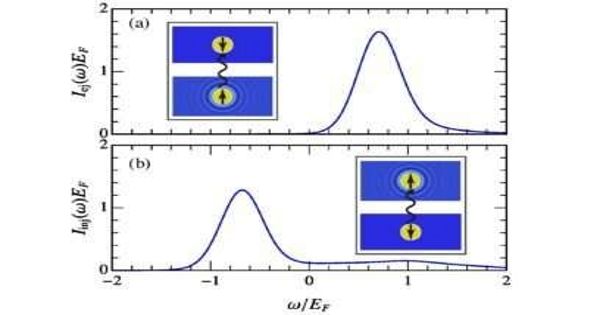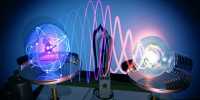Theoretical study on thermodynamic can explain Temperature evolution of quantum impurities
A new theoretical study led by Monash broadens our understanding of their role in thermodynamics in the problem of quantum pollution.
Quantum impurity theory studies the behavior of deliberately introduced atoms (ie, ‘impurities’) that behave as particularly ‘clean’ quasiparticles within a background atomic gas, allowing a controllable ‘perfect test bed’ study of quantum correlations.
It is a new theoretical study advances our understanding of the role of thermodynamics in the ‘quantum impurity’ problem, which studies the behavior of deliberately introduced atoms (ie, ‘impurities’) that behave as particularly ‘clean’ quasiparticles within a background atomic gas, allowing a controllable ‘perfect test bed’ study of quantum correlations.
The study extends quantum impurity theory, which is of significant interest to the quantum-matter research community, into a new dimension — the thermal effect.
“We have discovered a general relationship between two distinct experimental protocols, namely ejection, and injection radio-frequency spectroscopy, where prior to our work no such relationship was known.” explains lead author Dr. Weizhe Liu (Monash University School of Physics and Astronomy).
QUANTUM IMPURITY THEORY
Quantum impurity theory studies the effects of introducing atoms of one element (ie, ‘impurities’) into an ultracold atomic gas of another element. For example, a small number of potassium atoms can be introduced into a ‘background’ quantum gas of lithium atoms.
The introduced impurities (in this case the potassium atoms) behave like a particularly “clean” quasiparticle in the atomic gas. Interactions between the introduced impurity atoms and the atomic background gas can be “tuned” via an external magnetic field, whereby quantum correlations can be investigated.
In recent years there has been an explosion of studies on the subject of quantum impurities, which, thanks to their controllable realization in ultra-cold atomic gases, have been immersed in various background media.
MODELLING ‘PUSH’ AND ‘PULL’ WITH RADIO-FREQUENCY PULSES
“Our study is based on radio-frequency spectroscopy, modeling two different scenarios: ejection and injection,” says Dr. Weizhe Liu, who is a Research Fellow with FLEET, FLEET working in the group of A/Prof Meera Parish and Dr. Jesper Levinsen.
The team modeled the effect of radio-frequency pulses that would force impurity atoms from one spin state into another, unoccupied spin state.
- Under the ‘ejection’ scenario, radio-frequency pulses act on impurities in a spin state that strongly interacts with the background medium, ‘pushing’ those impurities into a non-interacting spin state.
- The inverse ‘injection’ scenario ‘pulls’ impurities from a non-interacting state into an interacting state.
These two spectroscopies are commonly used separately, to study distinctive aspects of the quantum impurity problem.
“We found that the two scenarios — ejection and injection — are related to each other by an exponential function of the free-energy difference between the interacting and noninteracting impurity states,” says Dr. Liu.
These were the details of the news Temperature evolution of impurities in a quantum gas – ScienceDaily for this day. We hope that we have succeeded by giving you the full details and information. To follow all our news, you can subscribe to the alerts system or to one of our different systems to provide you with all that is new.















